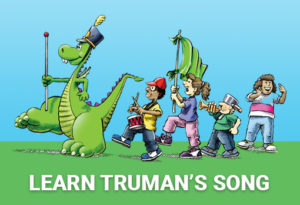A tornado is a violently rotating column of air extending from the base of a thunderstorm down to the ground. Tornadoes are capable of completely destroying schools, uprooting trees and hurling objects through the air like deadly missiles. Tornadoes can occur at any time of day or night and at any time of the year. Although tornadoes are most common in the Central Plains and southeastern United States, they have been reported in all 50 states. About 1,200 tornadoes are reported in the United States yearly.
Tornadoes come from the energy released in a thunderstorm. The most destructive and deadly tornadoes occur from super cells, which are rotating thunderstorms with a well-defined radar circulation called a mesocyclone. Tornado formation is believed to be dictated mainly by things which happen in and around the mesocyclone — but we still have a lot to learn about how tornadoes form.
As powerful as they are, tornadoes account for only a tiny fraction of the energy in a thunderstorm. What makes them dangerous is that their energy is concentrated in a small area, perhaps only a hundred yards across. Not all tornadoes are the same, of course, and science does not yet completely understand how part of a thunderstorm’s energy sometimes gets focused into something as small as a tornado.
There’s a lot that we don’t understand about tornadoes!
For example, we’re not really sure what the highest wind speed might be inside a tornado since strong and violent tornadoes destroy weather instruments. We really only have measurements of the winds inside weaker tornadoes. Mobile Doppler radars can measure wind speeds in a tornado above ground level; the strongest was 318 mph measured on May 3, 1999, near Bridge Creek/Moore, Oklahoma.
How fast does a tornado move? We’re not sure about that either, but a typical tornado travels
at around 10-20 miles per hour. So don’t try to outrun it!
The National Weather Service issues watches and warnings for severe weather and tornadoes. A tornado warning means that a tornado has been spotted, or that Doppler radar shows a thunderstorm circulation that can spawn a tornado.
When a tornado warning is issued for your area, seek safe shelter immediately. The safest place
to be is below ground, such as in a basement
or storm shelter. If you can’t get underground, then find an interior room in your house, with no windows, such as a bathroom or closet. 






